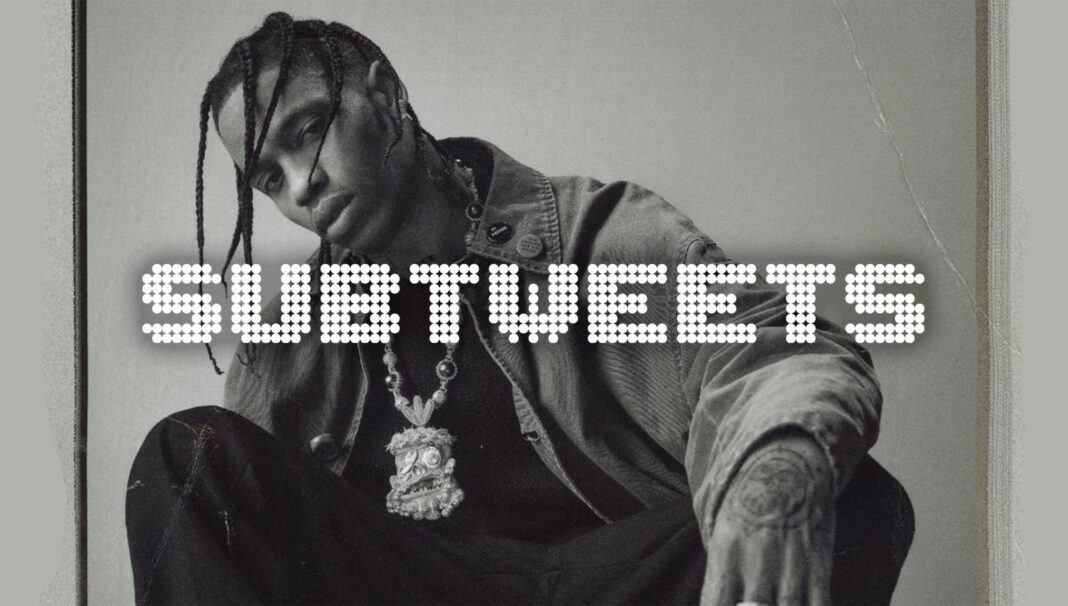Nobody should ever attend a concert and not make it home. And yet on November 5 2021, that’s exactly what happened. On the Friday night of Astroworld festival, a 50,000 capacity event curated by Travis Scott, crowd pressures during the headline performance resulted in ultimate collapse, with an estimated 300 attendees in need of urgent medical attention. At the time of writing, ten attendees have died – the youngest a nine year-old boy – and both Scott and festival promoters Live Nation are facing a rapidly escalating number of lawsuits, with a criminal investigation underway.
Captured through social media videos and anguished posts, the events around Astroworld remain confusing and highly complex. At face value, core questions appear to revolve around the degree of security management, the time it took to raise alarm, and the role of Scott himself – how much he could see from the stage, how much he knew, and why he continued to perform. Reddit, Twitter and TikTok are awash with gathering fans, trying to seek solace and answers. Piecing together collective narratives of the day, it becomes clear just how starkly different people’s experiences are, demonstrating the speed at which the tragedy escalated.
“When I got there around noon, security had already shut down the merchandise booth because people had rushed in there”, says Daniel, 24, a fan who posted on Reddit about his experiences but has since spoken directly to The Forty-Five. “The booth remained closed for almost three hours, but the crowd seemed to be taking responsibility for keeping things organised. It was during Don Toliver’s set that I started to feel unsafe; I was being carried up by the crowd involuntarily and I was worried about my girlfriend – If I lost her in the crowd I knew I wasn’t going to be able to find her again. I decided about three songs in we need to go.”
Having watched the likes of Lil Baby and SZA from a distance, Daniel felt things amp up further at the beginning of Travis Scott’s set. “People were pushing and shoving through to get to the front and it just became more and more congested. Moshpits were forming for every chorus, and by three songs in it was unbearable. Eventually we got far enough back, but then Drake came out, and every possible gap even where we were completely closed up. Travis stopped the show several times to get help for people, but when Drake left, I noticed a change of pace; he was rushing through songs, only performing the choruses and ending with a serious tone telling everyone to “get home safe”. I thought this was off, as he normally ends a show getting everyone hype for day two. As we were leaving the event it was nothing but ambulances rushing in. When we got home and tuned into the news, that was when we finally realised it was serious. You couldn’t really try to help others if you wanted to — it was nearly impossible without drowning in the sea of people yourself. I’ve heard since that one of the victims passed away helping other people, and it saddens me to know that. It was pure survival out there for the little time I was in the crowd.”
Though Daniel and his girlfriend owe their safety to their early exit, it simply wasn’t a possibility for many. In a crowd that tight, organ failure and cardiac arrest due to lack of oxygen becomes a very real possibility, with panic that exacerbates pressure on any perceived exit points; barricades, pulling at other fans, trying to jump up in an attempt to see. An overwhelming volume of numbers plays a part, but even in a modest crowd, a simultaneous rush of energy in one direction can be enough to pull people down. Without an orchestrated effort to verbally encourage a crowd to move back or appropriate crowd-breakers put in place, the results can be catastrophic.
“Crowd psychology can play a part, as can stage design and floor layout,” says Steve Allen, a crowd safety expert who has amassed 30 years of experience as head of security for world tours with the likes of Eminem, Oasis and Led Zeppelin. “In the crowd management plan, you have to identify those specific risks. If you’re doing a seated Paul McCartney show you’re not going to have crowd surfing and moshing, but if Paul McCartney says it’s his last ever show and it’s in a 1,000 person venue with hundred of touts outside, you know that the situation might be more charged. You have to know the context and reflect that in the plans.”
Though Steve explains the huge degree of safety planning and regulation that takes place in the months prior to an event, Astroworld has come under question for an array of logistical choices. Performing on a stage separate to the other acts, the mass movement in the direction of Travis Scott’s headline performance may have played a part in concentric pushing, as well as potential overcrowding from an early storm of the entrance. Security appears to be a widespread concern; having attended numerous Astroworld and Travis Scott concerts in the past, Daniel tells us that he was initially surprised at the amount of security he witnessed at this year’s event – “I genuinely thought they had gotten it right this time” – but a viral TikTok video from a staff member suggest that many of these members of this security were poorly-vetted, recruited as volunteers whose desire to enjoy the concert may have outstripped their diligence to the task at hand. A medic account seems to corroborate this, with first-person online testimony of staff who appeared to be untrained in delivering CPR. Another graphic video depicts an injured fan – 22-year old student Bharti Shahani – being pulled out of the crowd without correct lifting equipment, before being dropped on her head. After five days in ICU, Shahani passed away.
At approximately 9.43 PM, a group of concertgoers began a chant of “stop the show”, with some fans even making it as far as Apple Music’s live streaming cameramen, trying to signal for the show’s end. Some fans suspect that commercial pressure to keep the stream going might have led to indecisiveness over the show’s plug-pulling, while others think that the space required for equipment significantly cut into the space allocated for the crowd. “The way the camera crew and lights were set up, I think it took up a lot of space that people could’ve moved back into,” says Daniel. “This stage hadn’t been there in past events, and I think it played a big part in trapping people in.”
Under Steve’s ShowStop guidance – a globally recognised practice for effective crowd management – the time required to signal an alarm to the artist is crucial. It is considered proper conduct to station observing safety officials side of stage and at the front-of-house mixing desk, and then a stage manager on top of that; a person who receives the message and bears the final responsibility of informing the performer to halt the event.
“The artist should have already been briefed in advance that if that person comes on, that is it,” says Steve. “Of course the artist is in the moment; there’s nothing wrong with “come on let’s have it” when you’re entertaining 50,000 people. But if that manager comes on and those front-of-house lights come up, you have to be the person to tell that crowd to calm it down and take three or four paces back, because you’re the one that fans will listen to. In [Scott’s] defence, I do see him in videos, looking around the wings. I don’t know what he was hearing or looking at, but at no point, certainly in the footage I’ve seen, does anyone go on stage to tell him. Ultimately, someone should have come out to stop that show.”
Though Allen agrees that it is inappropriate to lay complete blame on the artist for the events of Astroworld, fans do note that this is not the first time that Travis Scott has been accused of inciting crowd chaos. Over the years he has constructed a shared ideal with his fans of ‘raging’, delivering performances that search for the extreme. Though exhilarating to watch, they have consequences; at Lollapalooza 2015, Scott was charged with disorderly conduct after encouraging concertgoers to storm the stage, while in 2017, he was sued by a fan who was encouraged by Scott to jump from a third-level balcony of a show, paralysed from the injuries he sustained in the fall. Fans do of course have their own autonomy, but as one of Gen-Z’s leading stars, Scott is aware of the lengths that impressionable audiences will go to receive his approval, encouraging competitive degrees of recklessness.
“People became used to this chaos over the years because it’s been what the “normal” has become,” says Daniel. “Overcrowded, understaffed, tightly packed, breaking gates, recklessness; all of this became okay. That’s not to say that everyone there was being incompetent or disrespectful, but the footage of people dancing on top of the ambulance is a clear sign of this. A big question right now is whether or not Travis knew the severity; in my personal opinion, unless someone on Travis’ earpiece told him that people were dying, I think he probably thought this was just another normal Travis show.”
Whoever ends up taking liability for the events of the night, there is no denying that the Travis Scott brand will forever be implicated. How he treads now could have serious implications for his career; reports suggest that he is in the process of contacting bereaved families directly and will be paying for their funeral services, but a sour taste has been left by some fans as to the ‘insincere’ nature of his initial statementm and his offer to supply every attendee with a free month’s trial of virtual mental health app BetterHelp, a seemingly tasteless sponsorship opportunity that barely scrapes the surface of complex PTSD. At the very least, his rager identity will require serious recalibration, but there is also his own shellshock and grief to account for – however uncomfortable some of his reactions might have seemed, nobody could ever claim that he would have wanted this for his fans. As the days and weeks go on, artists and organisers alike will be asking themselves questions about the relationship between performer and audiences, and the corners that simply cannot be cut when it comes to ensuring safety at live events.
With so many potential factors and unknowns in place, it is crude to claim definitive answers, to point specific fingers or spread smug misinformation about ‘real’ moshpit culture or satanic conspiracy. Answers will come in time; grief, guilt and reputational implication will not be exclusive to those who end up with the final litigation, nor will they serve to return any of the fans who have been lost to their families. Gigs can be one of the only places on earth where it feels safe to truly let loose, to sing and scream and mosh. Deprived of that during a pandemic, Astroworld should have been a moment of pure release, a celebration of being young and excited. For many, it was, until it abruptly wasn’t. The line between entertainment and safety was toed too close.
“Think about this; if your plane is going down, who is the pilot?” says Steve. “Who are the people at the last line of defence? What is their conflict of interest? The plans must have been in place for the event to get the permit, but who has done the plans? It would be wrong for me to speculate from the limited knowledge at this stage, but the thought of kids that have gone to that concert for a wonderful night of lifelong memories, just breaks my heart knowing damn well that someone has monumentally fucked up. There comes a point where you organisers have to recognise that unless you do things the right way, people can die.”
Subtweets is a weekly column that looks at the biggest talking points from Music Twitter. Join the conversation.







